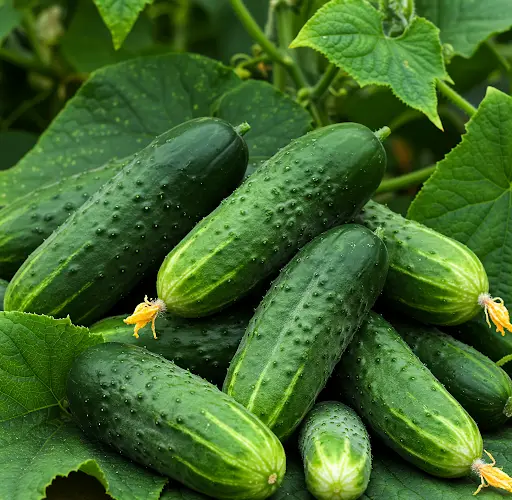The Best Companion Plants for Cucumbers: Boost Growth, Repel Pests, and Improve Soil Health
One of the most effective and natural ways to enhance your garden’s productivity is by practicing companion planting—the strategic placement of different plants near one another to maximize growth, repel pests, and support healthy ecosystems. In this article, we’ll explore ideal companion plants for cucumbers and the numerous benefits this gardening technique can bring to your vegetable patch.
Whether you’re a seasoned gardener or just starting out, understanding plant combinations can transform your garden into a thriving, pest-resistant, and productive space. By the end, you’ll know which plants to pair with cucumbers and why these choices can make all the difference in your harvest.
The Benefits of Companion Planting
Companion planting is more than a traditional gardening practice—it’s a science-backed method that promotes symbiotic relationships between plants. Here are the top three benefits:
1. Improved Soil Health
Certain plants naturally enhance the soil’s nutrient profile. For example, legumes such as peas and beans have the unique ability to fix nitrogen from the air into the soil. This not only benefits their own growth but also improves the surrounding soil for neighboring plants, like cucumbers, which thrive on nitrogen for leafy growth and fruit development.
2. Natural Pest Repellent
Some plants emit strong scents or produce compounds that repel pests. These natural defenses can help protect nearby crops from harmful insects. This reduces or even eliminates the need for chemical pesticides, making your garden more eco-friendly and safe for pollinators.
3. Enhanced Pollination
Flowering companion plants can attract beneficial insects such as bees, butterflies, and hoverflies. These pollinators are crucial for fruit development in many vegetables, including cucumbers. A well-pollinated garden means a bigger, healthier harvest.
The Best Companion Plants for Cucumbers
Cucumbers (Cucumis sativus) are warm-season vegetables that flourish when paired with supportive plant partners. Below are some of the best choices to grow alongside cucumbers:
1. Basil
Basil is not only a culinary herb but also a powerful insect repellent. Its aroma helps deter aphids, whiteflies, and spider mites—common cucumber pests. Additionally, basil is believed to improve the flavor of cucumbers, making your harvest not only healthier but also tastier.
2. Marigolds
These vibrant flowers are garden favorites for a reason. Marigolds are known to repel nematodes—microscopic worms that attack plant roots, including those of cucumbers. They also deter other insects and attract pollinators with their bright blooms. Plant marigolds near cucumbers to serve as a colorful, functional defense system.
3. Coriander (Cilantro)
Coriander produces a strong scent that confuses and repels pests such as aphids and mites. It also attracts beneficial predatory insects that feed on harmful bugs. Coriander makes a great border plant or can be interspersed between rows of cucumbers for maximum effect.
4. Corn
Tall and sturdy, corn can act as a natural support structure for climbing cucumber vines, reducing the need for trellises or stakes. Corn also provides light shade, helping to protect cucumbers from intense midday sun, especially in hotter climates. Just ensure the cucumber vines don’t overcrowd the corn or outcompete it for nutrients.
5. Legumes (Peas and Beans)
As mentioned earlier, legumes enrich the soil with nitrogen, a nutrient essential for robust cucumber growth. Planting peas or beans nearby can help sustain healthy cucumber development and support overall garden fertility. Just keep in mind the spatial needs of each crop to avoid competition.
Tips for Successful Companion Planting
To get the most out of companion planting, keep these practical tips in mind:
-
Spacing matters: Allow enough space between plants to ensure good air circulation and prevent overcrowding, which can lead to fungal diseases.
-
Monitor plant compatibility: Not all plants get along. Avoid pairing cucumbers with potatoes or aromatic herbs like sage, which may hinder their growth.
-
Rotate your crops: Change plant locations each season to reduce disease buildup and maintain soil health.
-
Observe and adapt: Every garden is unique. Pay attention to how your plants respond and adjust your combinations as needed.
Conclusion
Companion planting is a simple, natural, and effective way to create a more productive and resilient garden. By growing cucumbers alongside plants like basil, marigolds, coriander, corn, and legumes, you can enjoy improved soil conditions, fewer pests, and a more abundant harvest.
Not only will these combinations help your cucumbers thrive, but they’ll also contribute to the overall health and beauty of your garden. Try out these pairings this season and experience the benefits of plant synergy firsthand.
Happy gardening!



